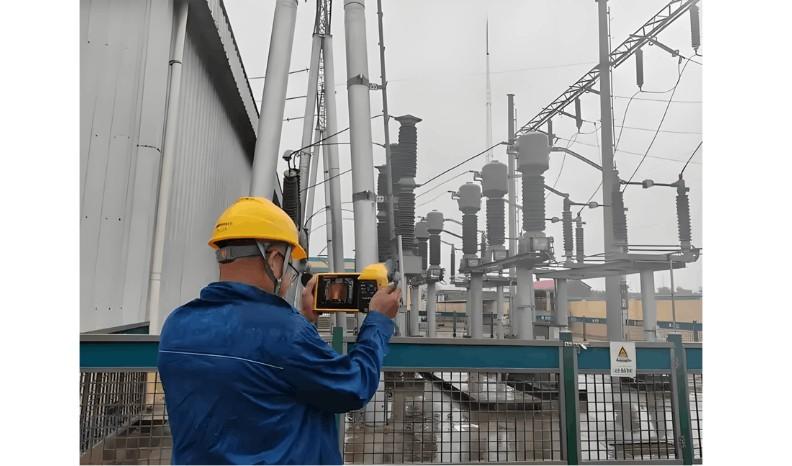A power system is a large-scale network composed of numerous interconnected components, including generation, transmission, substation, distribution, and end-user equipment. Failures in electrical equipment can not only lead to unexpected outages and financial losses for power utilities, but also cause significant economic damage to consumers. Therefore, the reliability and operational status of these devices directly determine the stability and safety of the entire power system, as well as the economic performance, power quality, and service reliability of utility providers.
Online monitoring of electrical equipment—combined with advanced computational methods to analyze collected data—enables early detection of potential faults, facilitates preventive actions, and supports scientific fault diagnosis and condition-based maintenance. This plays a critical role in enhancing the reliability and safety of power system operations.
With continuous advancements and maturity of online monitoring technologies, along with successful applications in China's power sector in recent years, condition-based maintenance has gradually replaced traditional time-based maintenance and become an inevitable trend. As early as 2010, State Grid Corporation of China issued the Technical Guidelines for Online Monitoring Systems of Substation Equipment and began comprehensive implementation of condition-based maintenance, aiming to enhance equipment intelligence, promote smart devices and technologies, and achieve online safety warnings and intelligent equipment monitoring.
Currently, online monitoring primarily focuses on primary equipment in substations, including:
Capacitive equipment: online monitoring of capacitance and dielectric loss (tanδ)
Metal oxide surge arresters: online monitoring of total leakage current and resistive current
Transformers: online monitoring of dissolved gas analysis (DGA) in insulating oil, ultra-high frequency (UHF) partial discharge (PD), bushing PD and tanδ, and dynamic characteristics of on-load tap changers
GIS: UHF partial discharge and moisture (micro-water) content monitoring
Switchgear: mechanical characteristic monitoring and SF₆ gas density monitoring
1. Necessity of Online Temperature Monitoring for Electrical Equipment
Temperature is a key indicator of normal operation for primary equipment. Connection points in power equipment may suffer from loose compression, insufficient pressure, or contact surface degradation due to thermal cycling, foundation shifts, manufacturing defects, environmental pollution, severe overloading, or oxidation. These issues increase contact resistance, leading to temperature rise when current flows. This accelerates insulation aging, reduces equipment lifespan, and in severe cases, triggers arc faults, equipment burnout, expanded damage, or even fires and explosions—particularly at moving and fixed contacts of disconnect switches, which have high failure rates. All these pose constant threats to safe equipment operation.
Currently, most temperature monitoring relies on traditional methods such as wax temperature indicators and periodic infrared thermography. These approaches have several drawbacks:
Wax indicators are prone to aging and detachment, have narrow temperature ranges, low accuracy, require manual reading, and cannot support automated management;
Infrared thermometers require line-of-sight measurement, are affected by environmental conditions, and often fail when obstructed;
Manual inspections are labor-intensive, require close proximity (posing safety risks), and lack real-time capability;
Offline monitoring fails to capture temperature trends or detect anomalies in time.
Thus, traditional offline methods no longer meet the demands of efficient, safe, and reliable power system operations. There is an urgent need for online monitoring technologies that enable real-time temperature tracking, timely detection of abnormal conditions, and prevention of equipment damage and power accidents. Moreover, online temperature monitoring expands the scope of condition monitoring, providing vital operational parameters for condition-based maintenance and significantly contributing to the safe and stable operation of both individual equipment and the entire power system.

2. Development Trends in Online Temperature Monitoring Technology for Electrical Equipment
Online temperature monitoring technology typically integrates advanced sensor systems, communication networks, computer and information processing, expert analysis systems, and data repositories. With continuous technological progress, this field is evolving toward automation, intelligence, and practicality.
2.1 Application of Internet of Things (IoT) Technology
IoT is regarded as the next wave of information technology following computers and the internet, and has been recognized as a national strategic emerging industry in China, explicitly integrated into smart grid development. IoT connects physical objects to the internet via sensors such as RFID, GPS, and laser scanners, enabling intelligent identification, tracking, monitoring, and management through information exchange.
An IoT architecture for electrical equipment temperature monitoring consists of three layers: perception, network, and application.
Perception Layer: Collects real-time temperature data using sensors (e.g., contact or infrared types) installed directly on equipment. Short-range wireless technologies like Zigbee, 2.4G, or 433M are used for signal transmission, ensuring high-voltage isolation.
Network Layer: Transmits data between perception and application layers. It uses secure, reliable, and real-time power communication networks—primarily fiber optics, supplemented by power-line carrier and digital microwave systems.
Application Layer: Processes, analyzes, and visualizes temperature data across multiple devices, offering services such as anomaly alerts, trend analysis, online diagnostics, and data sharing through intelligent platforms.
IoT enables comprehensive, real-time awareness, reliable connectivity, and intelligent data analysis, forming the foundation for robust and scalable temperature monitoring systems.
2.2 Passive Sensing Technology – Replacing Battery Power
Most wireless temperature sensors rely on batteries, which face challenges in high-voltage, high-current, and electromagnetically noisy environments. Batteries have limited lifespan, require frequent replacement, and pose explosion risks in high-temperature conditions, limiting system reliability and safety.
To overcome these limitations, passive sensing technologies—including energy harvesting from electric/magnetic fields, RF power, thermal gradients, and surface acoustic waves—are emerging as the future direction. Passive sensors offer clear advantages:
Maintenance-free operation over the equipment’s lifecycle, improving system reliability
No battery means no explosion risk and continuous high-temperature monitoring for early fault detection;
Reduced battery usage lowers environmental impact, adding social value.
2.3 Point-Line-Surface Integrated Temperature Monitoring
This approach combines different monitoring strategies based on equipment type and criticality for optimal coverage.
Point Monitoring: Targets localized hotspots such as switchgear contacts, busbars, and cable joints where external inspection is difficult. Sensors are installed directly at these points for real-time monitoring.
Line Monitoring: Focuses on high-voltage power cables in cable tunnels, trenches, or trays. Overheating can cause fires and widespread outages. Distributed optical fiber sensing (DTS) is widely used, offering insulation, corrosion resistance, high-temperature tolerance, and immunity to electromagnetic interference. DTS enables continuous, precise temperature profiling along the entire cable length, with accurate fault location for rapid response.
Mobile Applications – Real-Time Monitoring Anytime, Anywhere
With increasing mobile network bandwidth and powerful smartphones and tablets—especially in the 4G era—mobile apps have become essential tools in enterprise operations. Their mobility, convenience, timeliness, and personalization are widely adopted in utility management.

Integrating equipment monitoring data into mobile apps via internet and cellular networks brings key benefits:
Breaks the limitations of traditional intranet systems, enabling real-time access to equipment status anytime, anywhere;
Enhances inspection efficiency with features like digital logging, photo capture, GPS tagging, and QR code scanning, transforming patrol inspections into a mobile, digital, and intelligent process.
During emergencies, personnel can quickly locate faults, view real-time and historical data, and respond faster, minimizing outage duration and scope.
Mobile apps eliminate spatial and temporal barriers, improve operational efficiency, enhance equipment safety, and support sustainable utility growth.
3. Conclusion
Online condition monitoring technology—especially temperature monitoring—is a core component of future smart grids, helping utilities improve equipment safety and economic performance. As technology advances, temperature monitoring will evolve toward comprehensive, intelligent, and practical solutions. Integration with IoT, mobile applications, and other emerging technologies will define the future trajectory of this field.
























